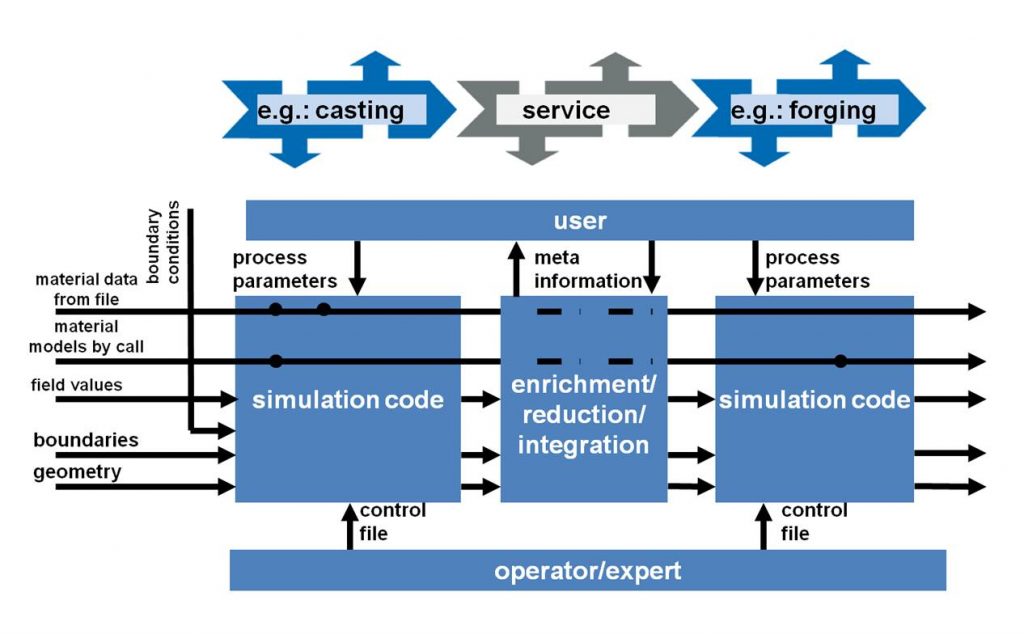Integrated computational materials engineering (ICME) is an emerging digital field seeking to improve the way things are designed and manufactured. Under PRISM2 (The Partnership for Research in Simulation of Manufacturing and Materials) the University of Birmingham is applying ICME to additive manufacturing and other processes.
In a recent discussion, the PRISM2 group reveals the benefits of ICME to a selective laser melting (SLM) production framework.

Reducing time to market and improving performance
Through its investigation of ICME, the PRISM2 team seeks to reduce the time to market and increase the performance of components. More specifically, they hope to create CAD/CAM software solutions that create a dialogue between component modelling, material microstructure, component properties and novel manufacturing technologies.
Working closely with the Manufacturing Technology Centre (MTC) and High Temperature Research Centre (HTRC) in Coventry, ICME development at PRISM2 also aims to “drive innovation and increase competitiveness in UK manufacturing sectors.”
Where additive manufacturing is concerned, PRISM2’s ICME strategies can be used to help understand the mechanical effect processes have on a part, and also determine the causes of cracking.
An example ICME SLM framework
Applied to the SLM process, one example ICME framework could be divided as follows:
– Powder deposition, on to the substrate or previous layer, via discrete element method (DEM) simulation.
– Melt-pool dynamics, simulating both the melting of material and predicting solid-liquid and liquid-vapour transitions.
– Solidification microstructures
– Representative volume element (RVE) reconstruction, e.g. “precipitate and grain size distributions as well as their mean and standard deviations.”
– Full field simulations
– Homogenization
– Location-specific property prediction, i.e. “the scatter in material properties within a manufactured component” which can be linked to distribution and the process used.
By including these steps at the design stage of a component, end users can improve their risk analysis in terms of part longevity. As stated in PRISM2’s recent discussion, “The gains associated with component lifing are hard to quantify but it has been shown that the application of location specific lifing can result in doubling critical component lives.”

Research expertise backed by Rolls-Royce
The particular areas of interest for PRISM2 are aerospace and the energy sector, and the group is currently in a long-term collaborative project with Rolls-Royce.
Rolls-Royce and fellow PRISM2 partner the MTC were recently part of the AMAZE Project, which sought to harness synchrotron data to help improve metal additive manufacturing processes.
Another collaborator of PRSIM2 research, this time from the University of Birmingham, is Professor Moataz Attallah. Professor Attallah is the director of the university’s Advanced Materials and Processing (AMPLab), and previously discussed the future of additive materials in an interview for 3D Printing Industry.
“Mesoscale modelling of selective laser melting: Thermal fluid dynamics and microstructural evolution” is one of PRISM2’s recent papers focusing on ICME for SLM. It is published online in Computational Materials Science, and was co-authored by Chinnapat Panwisawas, Chunlei Qiua, Magnus J. Anderson, Yogesh Sovani, Richard P. Turner, Moataz M. Attallaha, Jeffery W. Brooks and Hector C. Basoalto.
Is this your Research Team of the Year? Nominate PRISM2 and others for the 2019 3D Printing Industry Awards.
For more 3D printing research updates subscribe to the 3D Printing Industry newsletter, like us on Facebook and follow us on Twitter. Consider 3D Printing Jobs for your next research opportunity.
Featured image shows representative volume element (RVE) reconstruction of a sample metal bar. Image via PRISM2



